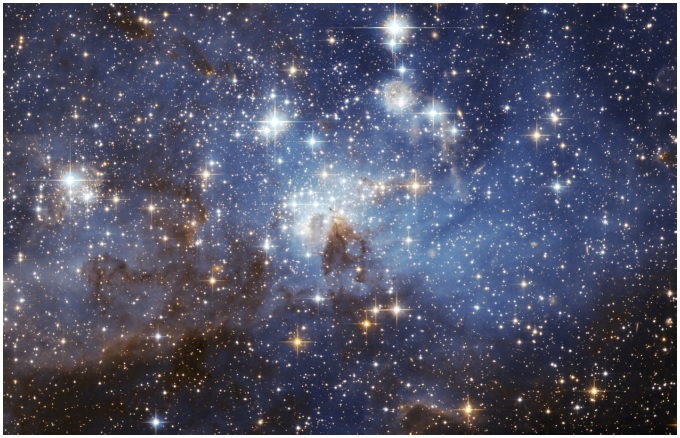

Even though we have studied the universe for hundreds and thousands of years, we still understand very little about a bazillion of things in the outer space. As we continue to explore the vast depths of the universe, we learn more and more about the pl...
Even though we have studied the universe for hundreds and thousands of years, we still understand very little about a bazillion of things in the outer space.
As we continue to explore the vast depths of the universe, we learn more and more about the planets, the stars, the constellations, and the galaxies.

Some are interesting, and some are quite confusing. Anyway, here’s a list of a few of the amazing and interesting facts on astronomy based on our current knowledge of the cosmos. Have a look.
FACT 1
The core of the Sun releases energy equivalent to hundred billion nuclear bombs every second. This energy is emitted in the form of heat and light powering the entire solar system as a whole.
FACT 2
Galileo is often wrongly credited with the invention of the telescope. It has been found out today that Johannes Lippershey, the Dutch eyeglass maker is the inventor of such an intricate device.
FACT 3
On Venus, a day is longer than a year on Earth.
FACT 4
Oxygen is generally circulated around the helmet of an astronaut to prevent misting on the visor.
FACT 5
When humongous black holes collide with one another, gravitational waves are released. These waves were believed to exist in the past and were finally detected scientifically in 2015.
FACT 6
Almost one million earths can fit into the Sun. After all, the sun makes up around 99.8% of the total mass of the solar system.

FACT 7
Black holes produce such powerful gravity that even light cannot escape from their gravitational clutches. They are called “black” for a reason and this is one for sure.
FACT 8
Shooting stars are not real stars. They are tiny dust particles falling through the atmosphere vaporizing completely in the process as a result of friction and other atmospheric gases.
FACT 9
There’s an actual program called SETI (Search for Extra-terrestrial Intelligence) that is designed to analyze radio signals from outer space for signs of extraterrestrial life.
FACT 10
The galaxy in which we live in (i.e., the Milky Way) is only one among the BILLIONS of others in space.

FACT 11
Even though Mercury is the closest neighbor to the Sun, the temperature on its surface can reach an amazingly low -280°F.
So why does it happen? That’s because Mercury has no atmosphere to trap the heat near the surface. Hence, the darker side of the planet gets very cold during certain times of the day.
FACT 12
The Milky Way galaxy is whirling rapidly at around 100 million kilometers per hour.
FACT 13
Your tears don’t fall in space. Here’s a case in point:
FACT 14
Neil Armstrong’s first words on the moon were: “That’s one small step for a man; one giant leap for mankind.”

FACT 15
Venus spins backward on its axis in comparison to the other planets in the solar system. A day on Venus is equivalent to 243 days on Earth. A Venus-year, on the other hand, weirdly comprises of only 224.7 days in all.
FACT 16
The brightest star in any constellation is called the alpha star, the next the beta, and so on.
FACT 17
Metals have a tendency to stick together in space. This process is called cold welding.
FACT 18
Spacecrafts come with double hulls to protect themselves from any damage caused as a result of outer space objects crashing into them.
FACT 19
Each star in a constellation is named after a Greek alphabet.

Source- Wiki
FACT 20
Planets possess magnetic fields around them because of the presence of liquid iron in their cores. As they rotate, the iron swirls around generating current that helps in the creation of strong magnetic fields.
FACT 21
The word astronaut originates from the Greek word “Astron,” meaning star, and “nautes,” signifying sailor.
FACT 22
Hubble’s law shows that the Universe is getting bigger every day. It also proves the point that the universe must have started from something very small, almost minuscule. This leads to the idea of the big bang theory.
FACT 23
Ceres is considered the biggest asteroid in the solar system. It’s almost 0.0002% the size of the Earth.
With that, we’ll bring this topic to a close for now. We’ll try to expand this list in the days to come but till then, adieu!
Tell us your learning requirements in detail and get immediate responses from qualified tutors and institutes near you.
Post Learning Requirement